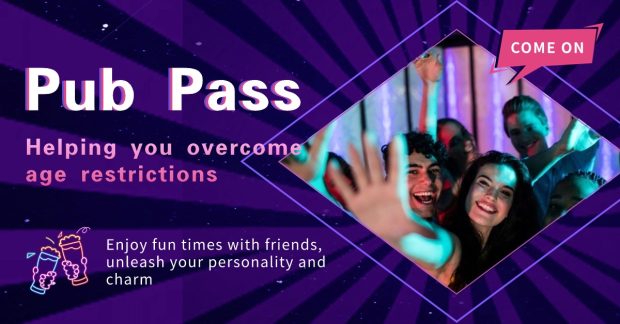In an era where digital and physical transactions intersect daily, the need for reliable, secure identification has never been more critical. From opening a bank account to boarding a domestic flight, valid forms of identification serve as the foundation of trust between individuals and institutions. Among these institutions, credit unions—member-owned financial cooperatives—play a distinct role in verifying identities, particularly as federal standards like Real ID reshape how identification is handled nationwide.
What is Real ID and Why Does It Matter?
Enacted by the U.S. Congress in 2005 as part of the Intelligence Reform and Terrorism Prevention Act, Real ID is a federal program designed to set minimum security standards for state-issued driver’s licenses and identification cards. The goal? To enhance national security by ensuring these documents are not easily forged, altered, or stolen. By 2025, Real ID-compliant licenses will be required for domestic air travel and access to certain federal facilities, making them a key piece of identification for millions of Americans.

States issuing Real ID-compliant cards must verify applicants’ identity, Social Security number, date of birth, and principal residence through original or certified documents. These include a U.S. passport, birth certificate, Social Security card, or utility bill. The cards themselves feature enhanced security features, such as holographic images, laser-engraved photos, and machine-readable zones, to deter fraud.
Credit Unions: A Cornerstone of Identification Verification
Credit unions, unlike traditional banks, operate with a member-first philosophy. As financial institutions, they are legally obligated to verify the identity of anyone opening an account or conducting significant transactions, a requirement under the Bank Secrecy Act (BSA) and the USA PATRIOT Act. This obligation aligns closely with Real ID’s focus on secure identification, making credit unions active participants in upholding these standards.
For credit unions, accurate identification verification serves multiple purposes:
- Preventing identity theft and financial fraud.
- Complying with federal and state regulations.
- Building trust with members by safeguarding their financial information.
Unlike larger banks, credit unions often have deeper community ties, allowing them to approach ID verification with a more personalized touch. Members may visit local branches, where staff are familiar with faces and can more easily spot inconsistencies in ID documents.
How Credit Unions Implement Real ID Requirements
Credit unions integrate Real ID standards into their daily operations through structured verification processes. Here’s a breakdown of their typical approach:
1. Document Collection and Validation
When a member applies for an account or a loan, credit unions request primary and secondary forms of identification. Under Real ID, primary documents (e.g., a Real ID-compliant license, passport, or birth certificate) are prioritized. Staff use specialized tools, such as document readers, to check for security features like watermarks, holograms, or microprinting. These tools can also cross-reference IDs with state or federal databases to confirm authenticity.
2. Staff Training and Awareness
Frontline employees—tellers, loan officers, and member service representatives—receive regular training on Real ID requirements. This includes recognizing counterfeit documents, understanding acceptable forms of ID for different transactions, and navigating state-specific variations in ID issuance. Training sessions may include workshops with law enforcement or document experts to stay updated on emerging fraud trends.
3. Member Education Initiatives
Many credit unions proactively inform members about Real ID through newsletters, website FAQs, and in-branch signage. For example, they might explain which documents are needed to obtain a Real ID, deadlines for compliance, and how non-compliant IDs (e.g., out-of-state licenses) affect transactions. This education helps members avoid delays when accessing services.
4. Adapting to Non-Compliant or Alternative IDs
Not all members will have Real ID-compliant licenses, especially if they reside in states that have extended compliance deadlines or if they rely on alternative IDs (e.g., military IDs, tribal IDs). Credit unions work within federal guidelines to accept these alternatives, often cross-referencing them with other documents (e.g., Social Security cards or utility bills) to verify identity.
Challenges Credit Unions Face in Identification Verification
While credit unions are committed to upholding Real ID standards, they encounter unique challenges:
Balancing Security and Member Experience: Strict verification processes can feel intrusive to members. Credit unions must streamline steps—for example, using digital ID verification tools that allow members to upload documents remotely—without compromising security.
Handling Diverse ID Types: Members may present IDs from multiple states or countries, each with varying security features. Training staff to recognize these differences is ongoing work.
Tech Integration: Smaller credit unions may lack the budget for advanced document verification software, making it harder to detect sophisticated forgeries. Some partner with third-party vendors to access cost-effective tools.
Member Privacy Concerns: Collecting and storing sensitive ID information raises questions about data protection. Credit unions must invest in encryption and secure storage solutions to prevent breaches.
Common Problems and Solutions in Real ID and Credit Union Identification
To address the needs of both credit unions and their members, here are five common issues and actionable solutions:
Problem 1: Members Unaware of Real ID Requirements
Many members may not know they need a Real ID for future air travel or federal facility access, leading to last-minute delays when applying for services.
Solution: Credit unions can host community workshops or partner with local DMVs to educate members about Real ID deadlines, required documents, and application processes. Sending personalized reminders via email or text can also boost awareness.
Problem 2: Difficulty Verifying Out-of-State or Expired IDs
Members relocating from states with different ID standards or presenting expired IDs may face verification hurdles.
Solution: Credit unions can use online databases, such as the Electronic Verification System (EVS), to confirm the validity of out-of-state IDs. For expired IDs, accepting secondary documents (e.g., a current utility bill with the member’s name and address) can supplement verification.
Problem 3: Delays in Processing Due to Manual Checks
Manual ID checks slow down transactions, frustrating members.
Solution: Investing in automated document readers that scan and validate IDs in seconds reduces wait times. These tools can also flag potential forgeries, improving accuracy.
Problem 4: Members Without Traditional IDs (e.g., Homeless or Undocumented Individuals)
Some members may lack standard IDs due to unique circumstances.
Solution: Credit unions can work with local social service agencies to accept alternative forms of identification, such as shelter IDs or letters from trusted community organizations, in compliance with federal guidelines like the BSA’s “reasonable belief” standard.
Problem 5: Data Breaches Risking Stored ID Information
Storing scanned ID copies exposes credit unions to cyber threats.
Solution: Implementing end-to-end encryption for digital files, limiting access to ID data to authorized staff, and conducting regular cybersecurity audits can mitigate risks. Cloud storage with strict access controls is another secure option.



